Support the LA Phil
Keep the music going. If you are able, please help the LA Phil continue to make programs like this one and impact lives through music education.
Give now:
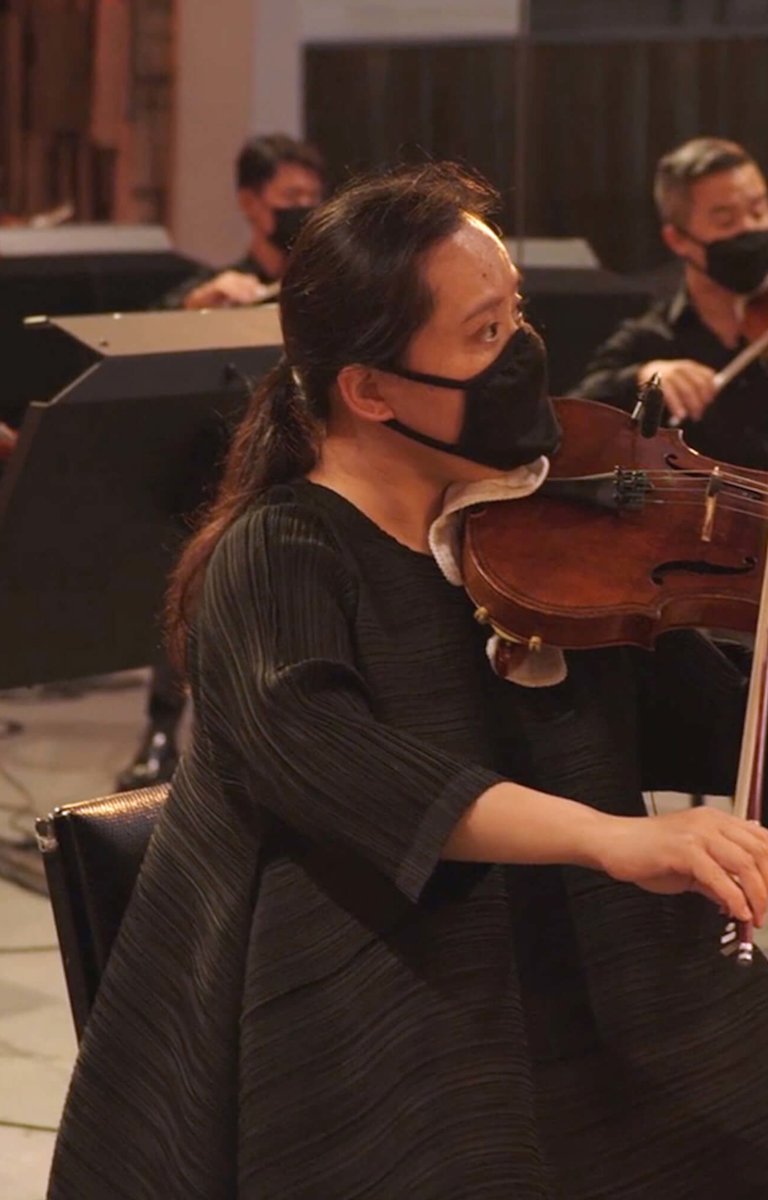
Season 1 - EP3
Power to the People!
This concert’s streaming date has passed. Enjoy its accompanying essay, interview, special performances and more below.
This episode was released on Jan 1st
About the episode
The LA Phil’s Power to the People! festival was cut short in March of this year by the COVID-19 pandemic. It turns out the festival couldn’t have been more prescient or necessary. We return to Power to the People! to amplify the voices of Black artists and, in the words of curator Herbie Hancock, to reaffirm that “we are connected to one another, and when we come together to further the causes of peace and justice, we are powerful.”
Gustavo Dudamel
Conductor
Los Angeles Philharmonic
Orchestra
Andra Day
Vocalist
Program
Banner
Banner was commissioned by the Sphinx Organization as a tribute for the 200th anniversary of the “Star-Spangled Banner,” the American national anthem. Banner is a rhapsody on the “Star-Spangled Banner” theme. Drawing on musical and historical sources from various world anthems and patriotic songs, I’ve made an attempt to answer the question: “What does an anthem for the 21st century sound like in today’s multi-cultural environment?” The structure is loosely based on traditional marching band form where there are several strains or contrasting sections; I have drawn on the drum line chorus as a source for the rhythmic underpinning in the finale. As a culture, we Americans are perpetually in search of ways to express our ideals of freedom, to proclaim, “we’ve made it!” as if the very action of saying it aloud makes it so. And for many of our nation’s people, that was the case: through work songs and spirituals, enslaved Africans promised themselves a way out and built the nerve to endure the most abominable treatment for the promise of a free life. Immigrants from Europe, Central America, and the Pacific have sought out a safe haven here and, though met with the trials of building a multi-cultured democracy, continue to find roots in our nation and make significant contributions to our cultural landscape. A tribute to the U.S. national anthem means acknowledging the contradictions, leaps and bounds, and milestones that allow us to celebrate and maintain the tradition of our ideals.
– Jessie Montgomery
Composed: 2017
Orchestration: 7 first violin, 6 second violin, 5 viola, 4 cello, 3 bass, string quartet
“Sorrow” from Symphony No. 1, “Afro-American”
In his first symphony, William Grant Still weaves musical ideas from jazz, spirituals, and the blues into a portrait of the post-Civil War Black experience. Each movement explores that shared emotional landscape, taking the listener through Longing, Sorrow, Humor, and finally Aspiration. At the heart of “Sorrow,” the traditional slow second movement, is a 12-bar blues that is a central theme in the entire symphony. Still aimed to present the blues with dignity at a time when white America at best viewed the juke joints it filled with suspicion and at worst wrote it off as devil’s music. “The blues were not immoral or trivial, as some people wanted to believe,” Still wrote. “[They are] an expression of the hopes and yearnings of a lowly people, wanting a better life.” In 1931, the Afro-American Symphony became the first symphony by a Black composer to be performed by a major U.S. orchestra, and Still conducted the piece at the Hollywood Bowl with the Los Angeles Philharmonic five years later. The version of the second movement heard in SOUND/STAGE makes use of a smaller-than-usual ensemble with orchestration approved by Still’s daughter, Judith Anne Still.
Composed: 1930
Orchestration: 5 first violin, 5 second violin, 4 viola, 3 cello, 2 bass, 2 flute, oboe, English horn, 2 clarinet, 2 bassoon, 2 horn, 2 trumpet, timpani, percussion
"Rise Up"
First appearing on Andra Day’s autobiographical 2015 album Cheers to the Fall, the song “Rise Up” is a motivational reminder Day wrote to remind herself “to stand up – because if you can stand up then you can take the next step, if you can take the next step, you can take the one after that.” What started as a personal reflection on perseverance grew into an echoing, universal call for civil and basic human rights. At the 2016 Democratic National Convention, Day sang “Rise Up” after the mothers of Sandra Bland and Trayvon Martin spoke about the growing Black Lives Matter movement. The performance helped make “Rise Up” the unofficial anthem of the movement. Day has said she is honored to see her song used this way, and as an artist who looks up to and often musically channels artists like Nina Simone who spoke their truth in their music – sometimes to the detriment of their careers – she is called to be outspoken and serve as a “voice for the voiceless.”
Composed: 2015

Artists as Activists
by Tyree Boyd-Pates
Tyree Boyd-Pates served as the Humanities Curator for the LA Phil’s Power to the People! festival, which was cut short by the COVID-19 pandemic. The following essay was originally scheduled for publication in March 2020. You can listen to a playlist Boyd-Pates compiled for the festival here.
Paul Robeson, an esteemed actor, singer, lawyer, activist, and athlete, famously stated, “Artists are the gatekeepers of truth. We are civilization’s radical voice.” Those words are central to the LA Phil’s Power to the People! festival because they are at the core of what drives artists to speak truth to power.
During the 1960s, Robeson’s prophetic statement became a clarion call for artists of the Civil Rights Movement who stood at the intersections of society and championed the voices of those who were rallying in the streets for change – especially for equality.
As a professor, historian, and museum curator, I have spent a great deal of time amplifying historical examples of Robeson’s statement within exhibitions, lectures, and essays dealing with African American social activism during the 19th, 20th, and 21st centuries. A recent exhibition that comes to mind is the California African American Museum’s Los Angeles Freedom Rally, 1963.
In 1963 Dr. Martin Luther King leveraged his nonviolent approach to activism and the support of several notable celebrities like Dorothy Dandridge, Rita Moreno, Paul Newman, Sammy Davis Jr., and Dick Gregory at Los Angeles’ Wrigley Field to lead the most significant civil rights demonstration in the U.S. shy of the March on Washington in August of the same year. Both civil rights demonstrations were pivotal in applying political pressure for the passage of the Civil Rights Act of 1964, and subsequently, the Voting Rights Act of 1965.
Artists are the gatekeepers of truth and civilization’s radical voice
In the vein of Robeson’s charter, these civil rights efforts were championed by both Black and white artist-activists, including Harry Belafonte, Ossie Davis and Ruby Dee, Sidney Poitier, James Baldwin, Marlon Brando, Theodore Bikel, Diahann Carroll, Charlton Heston, Burt Lancaster, Lena Horne, Eartha Kitt, and Elizabeth Taylor among others. Each recognized that, as artists, they were civilization's radical voices able to amplify the cause of civil rights in America during the Jim Crow era (1877 through the mid-1960s).
During this period, segregation was widespread throughout the country. It limited the life choices of African Americans, especially in the South. During the 1960s, African Americans earned half as much as their white counterparts and were twice as likely to be out of work. Moreover, only 49 percent of all Southern school districts had integrated. African Americans were largely second-class citizens until the passage of the Civil Rights and Voting Acts by Lyndon B. Johnson, almost 102 years after the Emancipation Proclamation.
Although civil rights gains were made after the passage of those two acts, political power and living conditions were still not equally distributed in America’s inner cities. Out of that dissatisfaction and frustrations over MLK’s nonviolent approaches to protest, a new era was ushered in: the Black Power Movement, creating a new generation of social activists who would inspire artists over the next two decades.
During the 1960s and 1970s, the Black Power era was a revolutionary social movement that espoused three core principles: pride in self, economic sufficiency, and equality for all people within the African Diaspora. Throughout the era, there would be an increased call for African American Studies departments on university campuses, an embrace of African ideals, and the proliferation of artistic expressions showcasing the lives of those of African descent – culturally and politically. Slogans of note during the era included “Black is Beautiful,” “Black Power,” and “Power to the People.”
Bring power to the people once again
In 1966 notable political organizer and activist Stokely Carmichael, also known as Kwame Ture, made the initial calls for “Black Power.” In the same year, Huey P. Newton and Bobby Seale, co-founders of Oakland’s Black Panther Party (BPP), along with prominent members like Angela Davis, Kathleen Cleaver, and Elaine Brown, all espoused the slogan “Power to the People.” This slogan was aligned with the party’s 10-point program and political platform that outlined the importance of Black community autonomy to counter state-sanctioned racial oppression and constant police brutality through self-defense.
Over the next several years, as the BPP gained more popularity, growing to 38 chapters and 13 free health clinics, so did their slogan “Power to the People.” This phrase represented African American’s dissatisfaction with the status quo and a desire to redistribute the political power that was in the establishment’s hands back to the people.
Despite the growth and influence of the BPP, by the end of the 1960s, FBI Director J. Edgar Hoover had named the BPP the greatest threat to the internal security of the United States of America. By the middle of the 1970s, they were dismantled, with 28 members killed, countless imprisoned, and others who fled the country for their safety. Still, the BPP’s message of “Power to the People” lived and would take hold among other artist-activists.
The BPP’s revolutionary aesthetic soon became more mainstream. The party’s natural Afro hairstyles, sunglasses, and black leather grew in popularity thanks to shows like Soul Train and influential musical acts like Marvin Gaye, Nina Simone, and notably James Brown.
In 1968, during the height of the Black Power movement, James Brown landed in the top 10 on the Billboard charts with songs like “Say It Loud, I’m Black & I’m Proud” and 1971’s “Soul Power,” where the call and response “What we want? Soul power!” regularly became “What we want? Power to the people!”
By 1971 the slogan “Power to the People” had made its way to former Beatles band member John Lennon in the form of a single with the Plastic Ono Band. Having grown more critical of his own non-violent stance on protest and heralding of peace, Lennon advocated for a more radical approach to revolution. On the cover of the single for the album, John Lennon is seen lifting his fist in the same fashion that Black Panther Party members routinely did. Lennon would go on to make other protest music that would pay homage to prominent Black Panther member Angela Davis.
Like Paul Robeson once stated, artists are the gatekeepers of truth and civilization’s radical voice. During the LA Phil’s Power to the People! festival, artists of all genres are using their artistry to galvanize the masses and rally support for grassroots causes that would bring equality for us all. Whether it is the Civil Rights Movement of the 1960s or the Black Power Movement of the 1970s, may we all use history as the template to actualize our collective strength to bring power to the people once again.
Author Bio - Tyree Boyd-Pates is a Los Angeles-based museum curator, historian, and public speaker whose museum work centers the African American experience in the American West. He recently joined the Autry Museum of the American West as the Associate Curator of Western History and is a 2021 Civic Media Fellow with the Annenberg Innovation Lab at USC and a 2021 Innovation Fellow with the UCLA Luskin Center for History and Policy.
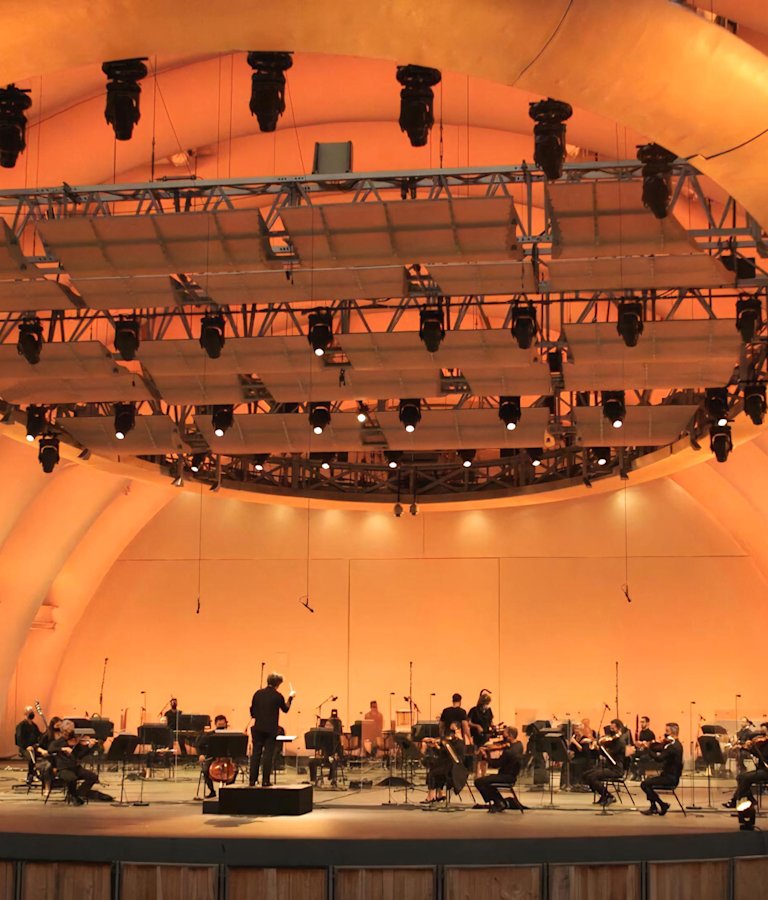
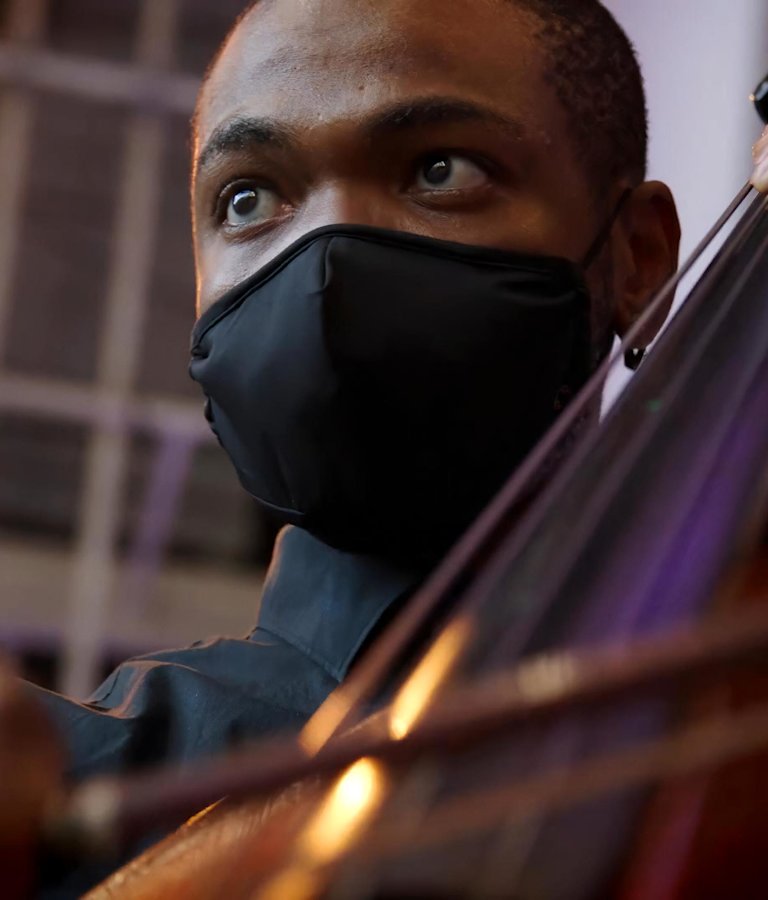
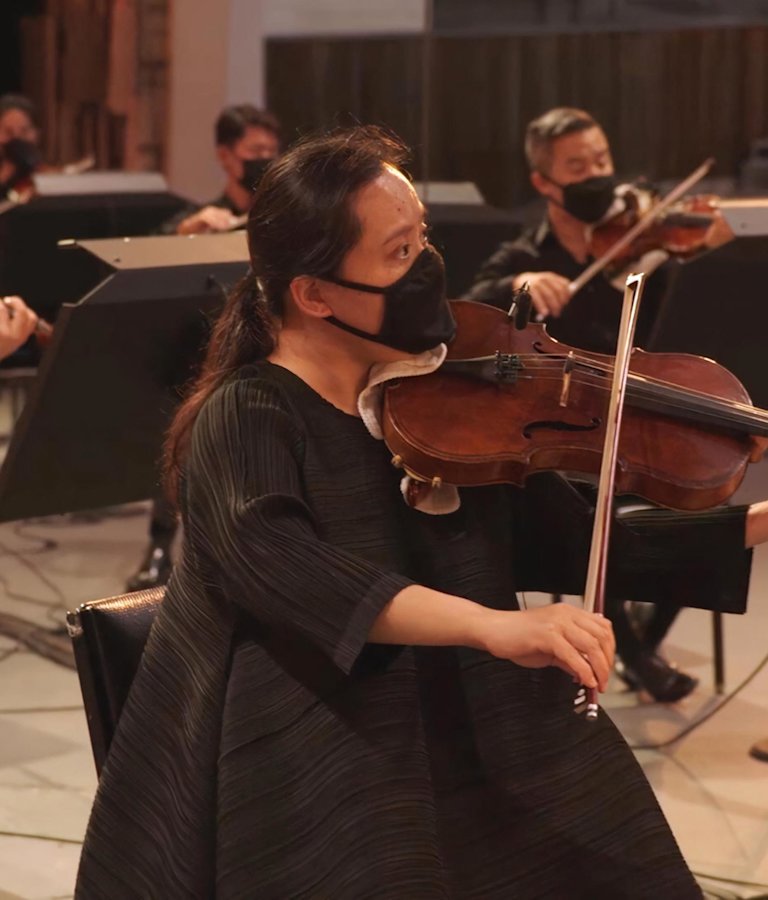
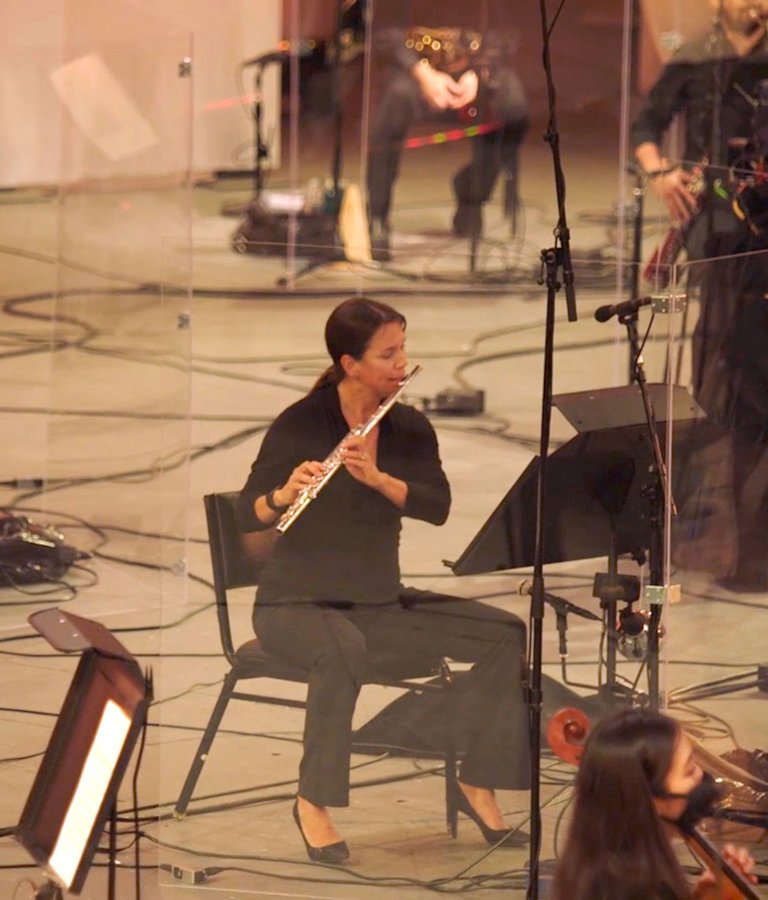


Gustavo Dudamel leads the Los Angeles Philharmonic
Bassist and LA Phil Resident Fellow Michael Fuller performing Jessie Montgomery’s Banner
Principal Viola Teng Li performing for “Power to the People!”
Violinist Jin-Shan Dai in a recording session for SOUND/STAGE
Associate Principal Flute Catherine Ransom Karoly performing on stage at the Hollywood Bowl
Andra Day and band on the stage of the Hollywood Bowl performing “Rise Up,” the unofficial anthem of the movement
Singer Andra Day performing with her band on the stage of the Hollywood Bowl
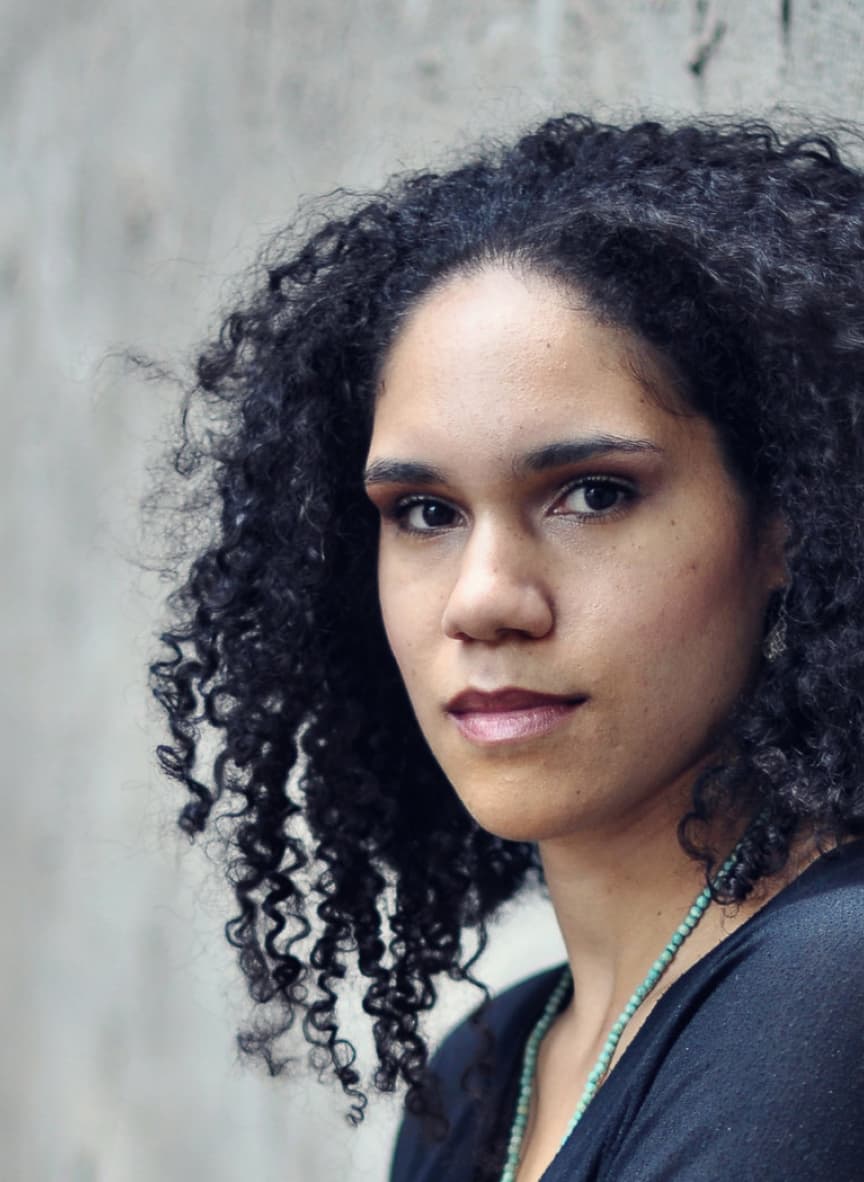
Jessie Montgomery
In conversation with
Jessie Montgomery
LA Phil Music and Artistic Director Gustavo Dudamel joined composer Jessie Montgomery for a conversation about her complex relationship with the national anthem and the beautiful cacophony of her New York City upbringing.
The following has been edited for length.
We met because I am a big admirer of your music. We’ve played Banner in different contexts – this time, a beautiful string version. I think it’s interesting how you approached the national anthem. I feel a lot of influence, but I also believe it’s very personal. Would you talk to me about this wonderful piece?
Thank you, it’s such an honor that you have been working on this piece. My relationship to the “Star-Spangled Banner” is complex. I’m not usually one to stand during the anthem, for example. I had complicated feelings about whether the song actually even applies to me. Being a Black American in the United States, certainly a lot of those ideals historically haven’t been applied. In order for me to celebrate the anthem, I had to find my way to celebrate what it means. I thought – an anthem for the United States in a different context, which we’re in now, from when it was originally written and celebrated, what would that look like? What would that sound like? With this piece, I’m saying that the United States is many, many things. It’s many cultures, it’s many influences, it’s everyone, it’s every continent that surrounds us. It’s everyone that’s come here. It’s the difficult struggle of equality. It’s all of these things. So how do you relay that in eight and a half minutes of music? It’s complex. I took to layering known anthems, work songs, freedom songs, and also other national anthems of neighboring countries. The first one that you hear in the piece, aside from the ”Star-Spangled Banner” at the very beginning, is the Mexican national anthem. It’s played by the first violin and then goes into a whole celebration of that.
Then in the middle of the piece, you hear “Lift Every Voice and Sing,” the Black national anthem, played by solo bass. There’s some significance there in that it was a quiet, sort of strained voice performing that song, and the audiences are forced to quiet down and listen to that special moment. I thought, this is a good opportunity to look at how songs and music actually influence the way we think about and view ourselves. Over the years, I keep reevaluating the concept within the piece. I think it gets stronger over time.
Yes, because we are many identities. That is the reality of our world. You take us through a beautiful journey to see that we are one. We have to find the real connection and real justice between one another.
And if for eight minutes, listening to a piece of music, it can inspire that kind of reaction, beautiful. For those people who do share my complicated relationship with the anthem, it helped me look at the message in the songs and in our ideals as a people and see those as universal.
You show that clearly with your music. And this is likely related, but you grew up in New York. How is that an influence on your music?
I grew up in a very active neighborhood, a lot of artists and a lot of different kinds of people. My father also ran a music studio when I was growing up. After school or on the weekends, I would sit in the lobby, and all of these different kinds of music and different kinds of styles of people would walk by – rehearsal here and recording session over there – all the bustling of that place certainly influenced me. There can be a lot of cacophony in some of the pieces that I write, and it’s like clamoring of different things that you’ve heard already clamoring together. I think that comes from having that experience of a place where there’s so much activity going on and so many different cultures bumping into each other and having to figure out how to make it work, so that’s certainly part of my aesthetic.
You balance that amount of information really well, really beautifully – you understand and have internalized it. I love that. Because we are, of course, living in a really complex moment with COVID and issues of justice happening. As a composer, what is your way to express this moment through the music?
Some of the work I’m doing now, I think the feelings inside of it could be considered related to the time, but in the longer view, I’m really trying to make art I feel connected to personally, that feels interesting to me, whatever I’ve been exploring musically, whether technically in terms of orchestration or certain musical styles that I’ve been studying over the past few years – just keeping on with that. I think, for me, conversation is more effective right now than a piece. I’m saying this after having said, “Banner has so much to say,” but for me, the conversations are really where I’m processing. So our conversation today and any other kind of interactions with friends, but my music has sort of remained the same. I feel closer to what I’ve been trying to do over the past couple of years with my music. I’m really wanting to just stay on that path. I may or may not be making political statements along the way.
Listen Up
A playlist by Alexsandra Mitchell, Manager of Education and Public Programs, CAAM
This playlist is a love letter to Black people. For in love, we find our power. Each selection is a celebration of our joy, our resiliency, our power, and our triumph. The selections highlight the beauty, love, and grace that carry us through and hold us in moments of doubt. Each song speaks to a part of our experience throughout the African Diaspora and adds a backdrop to the work we do as we strive for freedom and the ultimate power to our people through liberation.
For more information about the California African American Museum (CAAM), visit caamuseum.org.
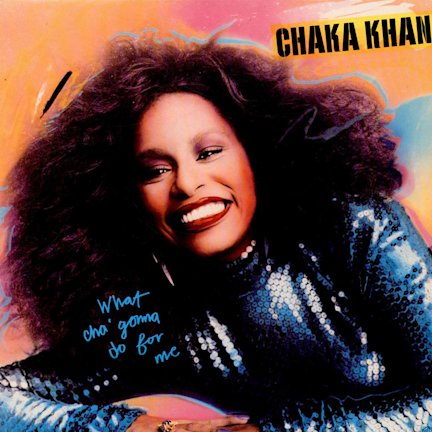
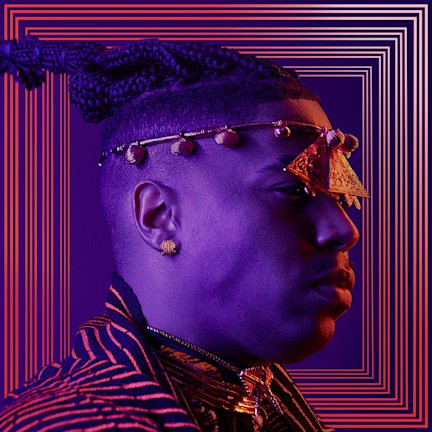
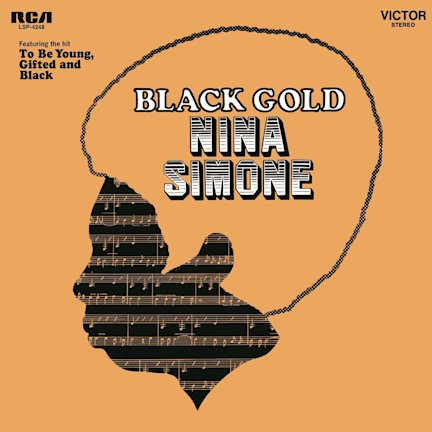
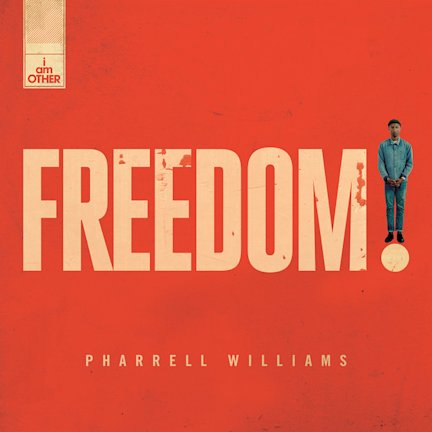
EP 3 CREDITS
An LA Phil Media Production
Gustavo Dudamel Music & Artistic Director
Directed by James Lees & Charlie Buhler
Featuring Andra Day
Andra Day, vocals Luis Raio, bass David Wood, guitar Charles Jones, keyboard / vocals Angus Godwin, drums / vocals
Compton Cowboys BLM protest photos by Robert Milo Blum
SOUND DESIGN Caleb Morris David Wood Fred Vogler
LIGHTING DESIGN Robin Gray Academy Lighting Consultants
IATSE LOCAL 33 Kevin Brown, Master Carpenter Andy Kassan, Master Electrician Donald Quick, Property Master Michael Sheppard, Master Audio-Visual/Union Steward Kevin Wapner, Assistant Audio-Visual
The stage crew is represented by the International Alliance of Theatrical Stage Employees and Moving Picture Machine Operators of the United States and Canada, Local 33
The Los Angeles Philharmonic thanks the Los Angeles County Board of Supervisors and the Department of Parks and Recreation who value assuring access to arts and culture in Los Angeles:
BOARD OF SUPERVISORS Hilda L. Solis, First District Mark Ridley-Thomas, Second District Sheila Kuehl, Third District Janice K. Hahn, Fourth District Kathryn Barger, Fifth District and Chair
PARKS AND RECREATION Norma E. Garcia, Director of Parks and Recreation and Regional Parks and Open Space District
EDITED AT PARALLAX Editor: Qing Shao Additional Editors: Guangwei Du, Yiqing Yu Executive Producer: Graham Zeller Post Producer: Rebecca Rose Perkins Color Correction: Bossi Baker Sound Mix: Unbridled Sound
WEBSITE ToyFight